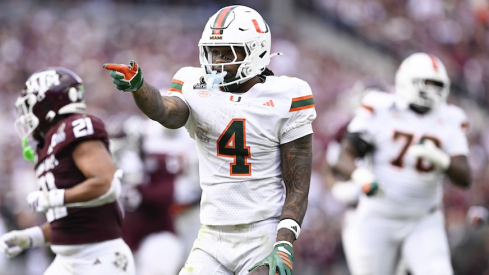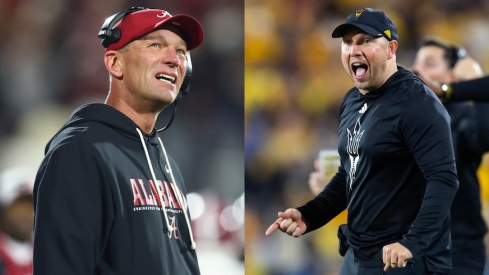In the video game Fallout 4, you play as a survivor of a nuclear apocalypse, tooling around a ruined Boston and generally raising hell while trying to survive the wrath of giant mutated bugs, Mad Max-esque raiders covered in rusted metal armor, and constant whining from Boston's human denizens about helping their settlements or some crap. There's also a bit about finding your lost son and intervening in some kind of robot/human conflict but frankly that's kind of boring and not really the point here.
Anyway, in Fallout 4, you can procure this gun called the Junk Jet. It's pretty self-explanatory: you shove whatever crap you can find into the thing, and it spits it out at a high rate of speed. How effective the gun is depends on what you crammed into it; decide to load it up with flowers and stuffed animals, and you're probably not going to explode as many heads as you would if you shoved some barbells in there. Here's what it looks like in action.
It's a great piece of violent video game nonsense, but it only really works if you've got the ingredients to make it fun. Otherwise it's just a massive waste of time and resources.
Yesterday our very own DJ noted that Ohio State ranks third in overall revenue among college athletic departments, in large part because of its affiliation with the Big Ten, which provides massive licensing benefits through various media contracts, and, obviously, Buckeye football and basketball, which through both ticket sales and merchandise alone could support an entire conference worth of FCS schools. I'll get to that point shortly.
What's great about the $185ish million in revenue that Ohio State's athletic department brings in is that it allows it to remain independent and mostly separate from the financial decisions that impact the academic side of the school. OSU hasn't collected student fees for the athletic department, for example, since USA Today started keeping track of the whole thing. While it is much more expensive for a student to attend a football game at Ohio Stadium than in a place like Tuscaloosa, the OSU student can always opt out of giving money to the athletic department by simply not purchasing a ticket.
Also notable is the fact that for the schools at the top of the list, revenues are usually in the black or even with expenses (sometimes suspiciously so, but that's an article for another time). Ohio State ended up with somewhere around $12 million in "profit," which isn't bad considering the school is moving ahead with several multi-million, multi-year athletic construction projects.
Other schools, like Alabama, Michigan, Georgia, Oklahoma, and so on fared similarly well, generally because their great brand recognition through football gives them and their conferences a leg up in media contracts and merchandising (although Duke, as a private school, isn't included in the list, Kansas and North Carolina are 36th and 35th, which should give you an idea about the relative impact of basketball versus football).
Ah, football! The great equalizer, right? Right???
Okay, so here's the big problem with the USA Today list: there are 230 university athletic departments listed on it. One does not have to travel very far down the list to find departments where expenses outpace revenues, sometimes by tens of millions of dollars.
Virginia, in the ACC, took in almost 8 million less than it spent. Cal doubled that, losing 16 million dollars. Rutgers, Illinois, and Purdue, even with the benefit of Big Ten revenue sharing, all lost money in 2017. What makes this particularly egregious is that with the exception of Purdue, all of those schools also collected student fees to help fund their athletic departments.
To be fair, a comparison of revenues and expenses for a single year can be misleading, and none of those schools are in danger of being bankrupted by their athletic departments (although notably Rutgers has had its fair share of problems going back a while now).
But let's step back for a second, because this isn't an article about embarrassed Power Five schools having to shuffle some cash around, this is an article about football. Here's a report from The National Football Foundation:
IRVING, Texas (June 28, 2018) – The National Football Foundation & College Hall of Fame (NFF) highlighted today that seven college football teams will take the field for the first time this season. Including the five other colleges and universities that will take the field in the coming seasons, the number of schools among all NCAA divisions, the NAIA and independents offering football has increased to an all-time high of 778. ...
In the past six seasons alone (2012-17), 35 football programs have been added by NCAA or NAIA institutions. Only 11 football programs have been dropped during the same span, including two at schools that closed and the University of Alabama at Birmingham, which returned to the gridiron in 2017. All 778 schools that offer football will be represented on the three-story helmet wall at the Chick-fil-A College Football Hall of Fame in Atlanta.
Cool! I guess!
Here's the problem as I see it: college football is not a means to an end. If your athletic department can support the massive amount of time and money involved in fielding a successful team, then by all means, go ahead and do it. But if your school is creating a football team from scratch as a way to raise revenues, or get attention for your school, or attract students, in the long term it probably isn't worth it financially.
A few examples. South Carolina State is a school with a football team in the MEAC conference of the FCS. In 2017, their expenses were around $8.1 million while their revenues were around $7.2 million, and in the last decade they've struggled to break even or lost money in every single season. Sam Houston State, another football FCS school and coming off a 12-2 season, barely broke even last year and has also struggled to stay out of the red for the past decade or so.
Both of those schools have the excuse that they've been playing football since the early 1900's, and cultural interia is a hell of a drug. It's hard to tell a university that's been invested in football for generations that they need to pull back. What's less understandable is when universities try to create a football culture out of nothing, generally on the backs of the students who attend.
The UNC Charlotte 49ers, UTSA Roadrunners, and the Georgia State Bulldogs are the newest FBS teams; all began play for the first time (at any level) within the last decade, and it's probably not a coincidence that all three struggle mightily to maintain athletic department revenues.
It's a little deceptive, however. UNC Charlotte's athletic department collected $38 million and only spent $33 million in 2017, which I'm sure will comfort students there, since their mandatory student athletic fee covered a ridiculous 54% of what UNC Charlotte brought in. The Charlotte Observer had this to say about it in 2015:
A separate probe by the Chronicle of Higher Education and the Huffington Post last month found that public universities spent more than $10.3 billion on sports from student fees and other sources besides earned revenue over the past five years.
Schools in less prestigious conferences, with less revenue from TV and other sources, generally hit up students even harder than the powerhouses. For proof, look no further than UNC Charlotte.
Student athletic fees there will bring in $18.8 million this year, the most of any public university in the state. That’s a 90 percent jump in six years that coincides with the launch of the school’s football program. Students pay $773 in athletic fees this year and will pay $802 next year. The university also subsidizes sports with some $5 million from other non-sports sources. That $23 million-plus in total student fees and subsidies for athletics puts UNC Charlotte in the top 10 percent nationally among public Division I schools.
The same thing is happening at UTSA and Georgia State, where student athletic fees account for 42% and (holy hell) 64% of athletic department revenue, respectively.
That isn't sustainable. Football programs have scaled up to insane levels over the past several decades, with increasing travel, building, and coaching expenses. It is much, much more difficult to create and sustain a football program at anything approaching a profit today than it was a century ago, and it is outrageous that in pursuit of trying to emulate the success of a school like Ohio State, universities are forcing their students to shoulder the financial burden of an expensive sport like football in the hopes that they'll eventually strike it rich.
Which brings us back to the Junk Jet.
Junk begets junk. The Junk Jet is really not that great of a weapon in Fallout 4, because it relies on the player being willing to literally throw away their own (sometimes scarce) resources to use it. It's a novelty item. Fun, but ultimately very few people will actually see much benefit from it.
Not every school needs a football program. It's romantic to think of an athletic director at some tiny school in rural Tennessee, staring wistfully into the sunset and praying for some good ol' fashioned pigskin like a redneck Jay Gatsby, but the reality is that dream will be built on the backs of kids who will already be leaving that university under crushing debt.
Simply put: if a university relies on students for a large part of its athletic department revenue in an effort to sustain expensive sports like football, then it shouldn't have those sports. Ohio State is what it is through a weird combination of luck, location, culture, and sustained success over the better part of a century. And television contracts.
Sometimes it's okay to watch them from the sidelines.


